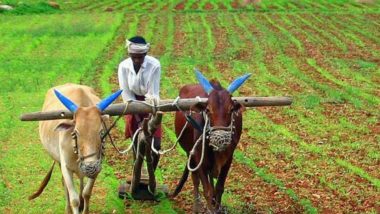The state of Maharashtra had been facing a drought situation for few years. The farmers' suicide due to lack of rains and crop failure made it to the headlines and the sad state was not clearly tackled. But a pleasant change has been seen turning the usually drought-affected regions into green areas. The Maan taluka in Satara district is one of the areas known for terrific droughts have farmers land into greener crop pastures. A certain amount of credit for this goes to the Water Cup competition organised by the Paani Foundation NGO. The competition started on an experimental basis in 2016 and the results are seen in 2018.
The competition has encouraged more and more villages to join in to undertake watershed management for their individual villages. Seeing the efforts of one village benefitting others, the residents of nearby villages are joining in. "Over 500 hectares of the land is green with groundnut, various vegetables and fodder at this time of summer. Almost all wells and borewells that generally get dry by February every year have water. Unlike other years, not a single tanker has been needed till now, and we will not need it till monsoon starts. Otherwise, we would require four tankers daily – that would cost Rs 8,000 per day. It was a big headache to keep requesting at the collector’s offices, MLAs for additional funding for water in summer," says Ramesh Gaikwad, the sarpanch of Karkhel in a report to The Wire. People of Kharkel started work from last year and worked on 25% of their total area. Seeing the fruitful results, this year their efforts shift to covering the 100% area for winning the competition.
This initiative has seen people from different villages taking a considerable effort in digging land, making channels for rainwater conservation. In some villages, it is the children who have been taking an initiative and encouraging the elders to join. In Savkhed village, a 6-year-old boy did not eat food until his father got him a tank to make a soakpit. Once he got the soakpit he along with his friends started working and digging in the soil and working for conservation. Seeing the younger generation take such active efforts the other children joined and eventually the parents started joining hands. Today all the villagers have come out to help achieve the common motive. In Ahmednagar's Chinchodi village, 450 people vowed not to return to their houses until they complete the entire work for water conservation. The group sleeps in the ground of the Zilla Parishad school and starts working early every morning.
With so much determination seen in the young and old, the face of the situation is set to change and is in fact seen. When the Water Cup started in 2016, it had only 30 villages participating. 2 years down the line there are 4,025 villages from 75 talukas from 24 districts already competing to do their best. This covers almost 90% of the drought-prone area. The movement may have been started by the NGO but it has created an instinct for people to join along and create a difference. Not only the farmers people from regular lives, the servicemen are also doing their best to contribute to the efforts. People from the cities nearby are going to the villages to join a hand with them to encourage them even more. With all of this happening in much enthusiasm, we can only hope for a drought-free state this year.
(The above story first appeared on LatestLY on May 24, 2018 11:48 AM IST. For more news and updates on politics, world, sports, entertainment and lifestyle, log on to our website latestly.com).












 Quickly
Quickly





















